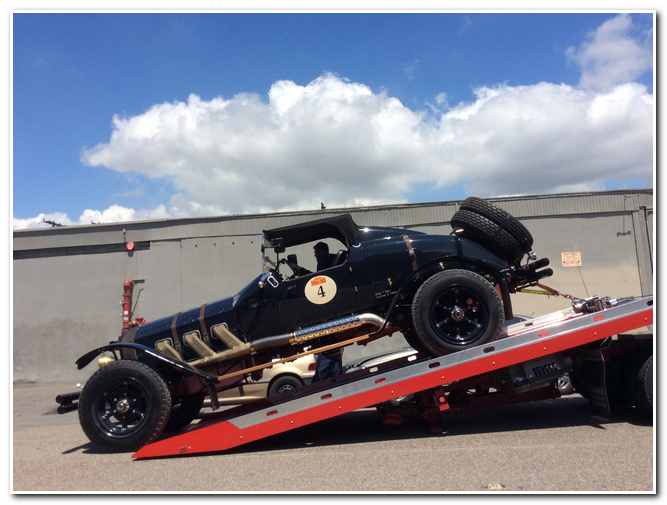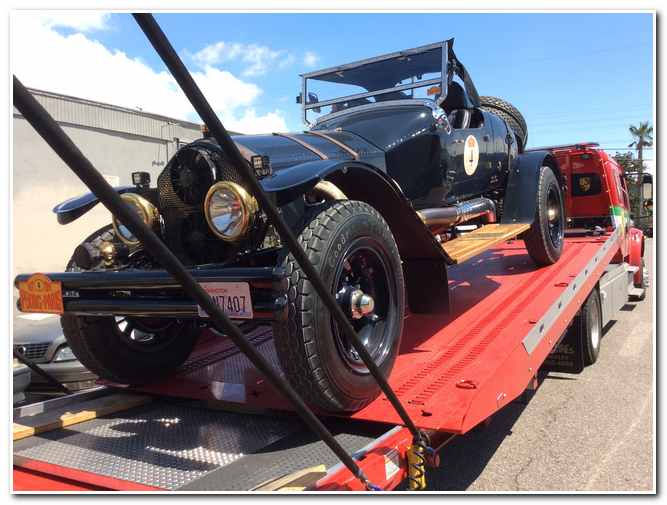Although some of the Peking to Paris race details are more fully explained on the web site of The Endurance Rally Association, here are the facts about the two vehicle entries from The Black Horse Racing Team and Steve Trafton.
.
.

.
.
.
What is the schedule for the Peking to Paris Motor Challenge?
The cars start 1 minute apart. Since Trafton’s vehicles are numbered 1 and 4, they will start the race only 4-5 minutes apart. The route they follow is by map given at the beginning of the race and by GPS in Mongolia.
What other kinds of vehicles are entered?
Why are certain cars favored over others?
How did you decide on this race and why did you choose to move ahead?
As in other rallies, there are timed legs in the race. The winner overall is the car with the least deductions for the timed event.
There are some preparations for mechanical problems, but if a car breaks down in Mongolia it can ruin your day.
The Black Horse Racing Team made a few last minute changes to the two rebuilt American La France Speedsters. They now have cables to easily connect both cars’ batteries together. Why? In case one car needs a jump they can now charge one car without removing the floor and accessing the battery box of the other. They also installed a number of inverters to recharge the cell phones, laptops and camera batteries. Modernity intrudes.
And there were a few creature comforts installed to benefit the occupants who will need to drive 10-12 hours per day in order to complete the 300-400 mile legs.
Although the trip runs about 36 days there are three or four rest days, when drivers can work on their cars or take a rest from driving. There is accommodation in hotels in the larger cities. But what about remote areas?
Although most of the route does not have to contend with security issues, the group is encouraged to stay close to the others when traveling through unknown or potentially unfriendly territory. China, Mongolia, Russia and Siberia are generally safe. Belarus does not have the same negative issues of the Ukraine (and the political situation has changed this years’ route). Driving the larger cities will be more closely monitored. But what about protection from the weather?
We will follow Steve and Katherine, Tim and Dwight’s daily progress and post regular Blog Updates of the journey. Dwight (Ike) Trafton is providing team-updates through email…i.e. when he can access a server. But there are some remote areas that are simply without communication. In Mongolia and Eastern Siberia especially, “broadband” is not a common word. But each car carries a satellite telephone, so in theory an emergency phone-call could be made from any point. If only Marco Polo had known about satellite phones at the time, he could have called ahead for pizza.
Most of the gasoline is trucked in along the route and costs about $6 to $8 per gallon. For vehicles that get 3.5 MPG, have 130 horse power, 1000 pounds of torque, and a weight of 8200 lbs each, this amounts to a lotta fuel.




That is so cool. I got to see car #1 while it was parked near Glacier National Parks East Village.